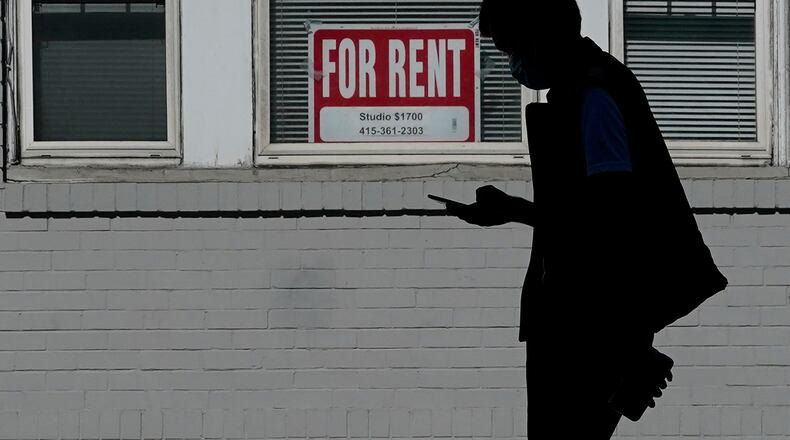Executive Director Jeffrey Diver told the Journal-News they have awarded $16.8 million to 2,591 needy households with the commissioners’ federal funds and $8 million to 2,451 families with other grant money they have received.
SELF had to pause the program once before because the federal money, which came in batches, dried up. When they started the program in early 2021 he had almost his entire staff of 27 to 28 people helping in some way, but now he is down to a handful working on this program — hence the backlog. His agency gets 10% of the grant to administer it.
“It’s been a significant reduction because when we first launched into this, 10% of $11.4 million is $1.4 million, whereas now we’re down to much smaller numbers of money that’s available,” Diver said. “And as it’s been coming in spurts, it’s hard to maintain your staff when the money isn’t there.”
In response to the coronavirus pandemic, federal lawmakers approved two emergency rent and utility assistance programs, the first bucket of up to $25 billion was established under the Consolidated Appropriations Act of 2021, which was enacted in December 2020. The county qualified for $11.4 million and received it in one lump sum.
Another $21.5 billion was approved under the American Rescue Plan Act which was enacted in March 2021. The county commissioners were allotted $9 million but did not accept the second round of funding initially because they wanted to gauge the need first. They tapped it in January 2022 but the money has come in waves.
Susan Ellerhorst, the county’s community development administrator, told the Journal-News they just received the final $2 million payment from the U.S. Treasury late last week. Nearly $1.4 million was clawed back last year and she doesn’t believe it can be recovered.
“According to the Department of Treasury guidance, I don’t think we’re going to get any of that back because they reallocated that money to other government agencies,” she said.
The commissioners were allocated the second round of funding in June 2021, but chose not to collect it until last January. The Treasury notified the county the day before the deadline it needed to expend 20% — or $1.8 million — of the $9 million tranche by March 31, 2022 but they were still drawing down the first pot of money.
The first time SELF had to suspend applications was last summer — the Treasury only sent $3.6 million of the $9 million allocation, and it ran out. SELF started taking applications again at the end of October when the Treasury sent another $2 million.
The Journal-News obtained emails the Treasury sent to the county’s development department that show the county was promised a $4 million allotment would be forthcoming on Sept. 30, but five days later, the amount had been halved. Treasury sent $2 million on Oct. 27.
Diver said he has been told there are more assistance dollars coming from the state but not how much. Most people are looking at the pandemic in the rearview mirror but Diver said there are still those suffering the ill effects of the crisis and qualify for the funding.
“The guidelines are so broad that most people are able to find how COVID has impacted their household,” Diver said. “People are still getting COVID, people are still being impacted by COVID and there are people who who may have been impacted months ago who are still feeling the effects.”
The new infusion of assistance for those in need couldn’t have come at a better time since the additional COVID food stamp allocations expired on Tuesday. Butler County JFS Executive Director Julie Gilbert has said essentially that means people will received at least $95 less per month to buy food for their families.
The Families First Coronavirus Response Act allowed states to request emergency allotments for households participating in the Supplemental Nutrition Assistance Program. As a result, ODJFS has been providing emergency allotments to SNAP households since March 2020. Congress recently passed the Consolidated Appropriations Act of 2023, which ended the program.
Gilbert told the Journal-News “it is too soon to tell the overall impact, however we do anticipate our call volume going up.”
About the Author

